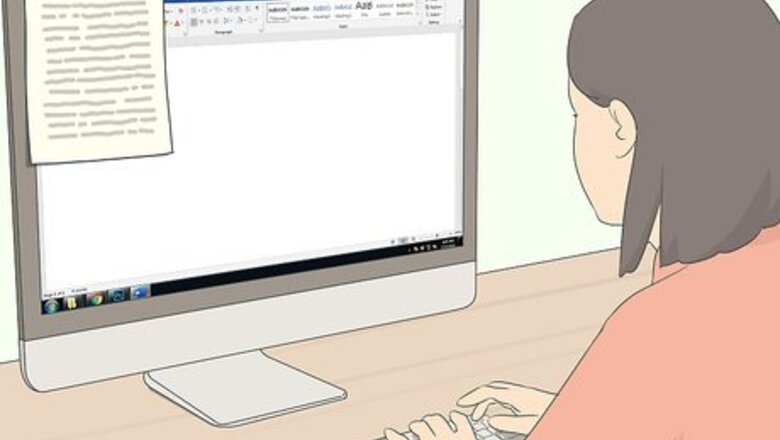
views
Improving Your Speed and Technique

Position typing material at eye level next to your monitor. Set up papers and other resources before getting into a typing position. Place them next to your monitor so they are easily visible at all times. Ideally, set them up so you are able to glance at them without looking down or shifting your posture. If you are able to do this, such as by setting the material on a stand, you will find copying it to be much easier. During practice always set typing material at eye level in a well-lit spot. Place lights around your monitor if you need them to make out the small text. It makes your typing much more efficient since you don’t have to keep looking from the monitor to the page. Note that many typing tests are exclusively on the computer, so you won’t need to worry about positioning material. However, it’s still good to practice this at home to improve your speed and prepare in case the test involves a physical document.

Place your fingers on the center keyboard row when you start typing. There are quite a few different keyboard layouts in the world, but they all have the same basic structure. Consider he middle row of the keyboard to be home base. Look at it for a pair of keys with little ridges. Keep your index fingers positioned over these keys, then place your middle, ring, and pinky fingers on the keys next to them. Use the standard English QWERTY keyboard as an example. The home keys are F and J, which have small ridges you can feel without looking. Your remaining fingers will touch the D, S, and A keys on the left and the K, L, and : keys on the right. When you need to hit a different key, reach out with one of your fingers. Return it to the home row when you’re done. The exception is the spacebar, which you can tap with one of your thumbs.
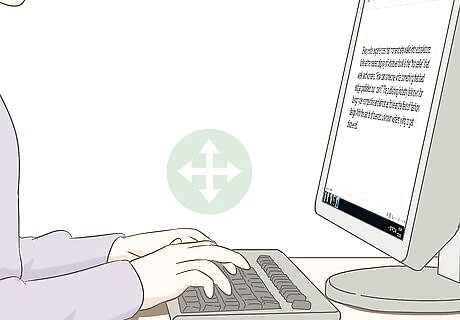
Reach all of the keys while moving your hands as little as possible. Hold your hands still over the home row, only moving them as needed to stretch for distant keys. Use the closest finger to hit each key. Try to memorize the positioning of each key so you don’t have to look down while you’re typing. By keeping your hands still over the central part of the keyboard, you won’t need to reset your positioning to reach for whatever letters come next. Think of the keyboard as being arranged in columns. For example, use your right index finger to reach the 4, R, F, and V keys. After hitting one of these keys, return it to the F key so you’re ready to hit another key in this column. During practice, take time reaching for all of the keys. Type randomly to get more comfortable reaching for each key and remembering where it is located.

Look at the screen at all times while typing. You probably know some people who type with 2 fingers and look down at the keyboard all the time. You may even do it yourself, but it can hurt your chances of passing a test. Keeping your eyes on the screen forces you to learn the key positions on your keyboard. It also allows you to catch typing mistakes right away. No matter how fast you think you are when you’re looking at the keyboard, you can become faster by improving your technique. Looking at your fingers can be a hard habit to shake, so practice often! Note that in some tests, you won’t even be permitted to look down at the keyboard. Looking down affects your chances of passing.
Succeeding at Typing Tests
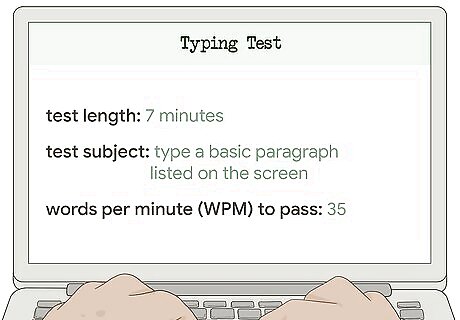
Find the test format in advance if possible. Typing tests can come in a variety of different formats, so, if you know what to expect, you can better prepare for it. Try asking the test administrator or other people who have taken the test. Figure out the test length and what you will be asked to type. Also, ask how many words per minute (WPM) you need to type to pass the test. Then, search for similar tests to prepare. Basic typing tests tend to be 3 to 5 minutes long, although you may be asked to put your endurance to the test with something much longer. Many tests ask you to simply type a basic paragraph listed on the screen. You might also be asked to play a typing game, copy text from a page, transcribe a conversation, or type without using the backspace button. The test administrator may wish to keep everything a secret, which means you will just have to rely on technique and preparation!
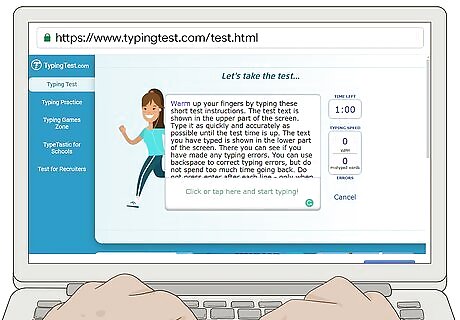
Check the test instructions to find out what to do on the test. Make sure you know what you need to do to complete the test. Most typing tests are straightforward. They just ask you to type out whatever words appear on the screen. However, some tests may come with unique rules, which can depend on the company giving the test. One rule to look for is how the test scores speed and accuracy. You may find that it asks you to leave errors alone, correct them. It may tell you that you need to reach a certain accuracy level to pass. Note the test’s format as well as any rules that change as you proceed. Your test might be set up as a game, ask you to type random sentences, or transcribe a paragraph, for instance.
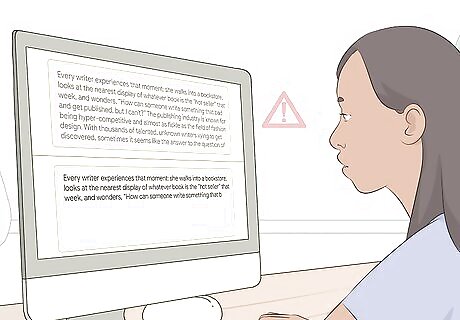
Read the text carefully as you type to stay accurate. You may feel tempted to look ahead while you’re typing. However, try to focus on the words you are currently typing instead of what is coming next. After you type a word, scan a couple of words ahead. Type those and repeat the process to complete the test with a good balance of speed and accuracy. If you read too far ahead, you most likely will get distracted and start mixing up words and letters. Take your time so you don’t make mistakes. With practice, you can learn to read and type faster at the same time. Balancing both tasks is often difficult at first, but it becomes second nature once you get accustomed to using proper typing techniques. Remember to pay attention to capital letters, punctuation, and other components that could affect your accuracy. Type exactly what the test asks you to type.

Type with accuracy instead of going as fast as you can. Speed is important, but accuracy is usually more valuable when it comes to typing tests. Don’t try to push yourself to go at a speed you’re not used to reaching. Instead, take a couple of deep breaths and focus on your technique. Make sure you clearly read whatever you are asked to type so you can avoid some of the mistakes you would make by speeding through the test. Typing tests typically include a time limit, but that doesn’t mean you have to type everything you are asked to type. Most tests give you more text than anyone can type in a single session. Just do your best to type as much as you can! Accuracy is often a much bigger test factor than raw speed. Someone who types with precision at a steady rate may score better than someone who types wildly but with a ton of mistakes.
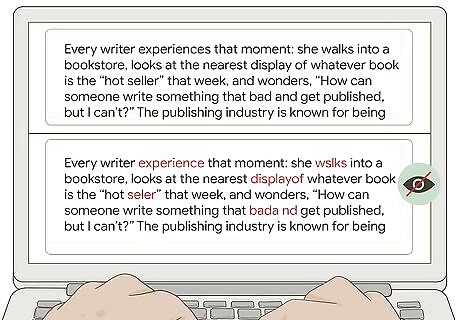
Ignore errors unless the test specifies that you have to correct them. Going back to fix errors is more time-consuming than continuing with the test. It can be difficult to forget mistakes, but most tests don’t reward you for fixing them. Do your best to forget the error and focus on what you need to type next. Don’t let it throw off your rhythm. If the test specifically asks you to go back and correct errors to proceed, then stop and fix misspellings. However, most tests aren’t designed this way. Instead, they calculate your speed and efficiency at the end.
Choosing a Comfortable Posture
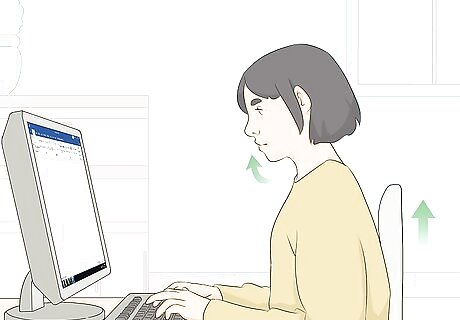
Sit with your back straight and your head up. Good posture makes a big difference in typing. Make sure you have a comfortable chair with a strong back you can rest against. Sit all the way back in the chair. The chair needs to provide you with adequate support, but it also has to leave you with plenty of room to reach the keyboard. Move your chair close enough to the keyboard so you can touch it without having to move your elbows from your sides. If your chair is adjustable, work with it for maximum comfort. Remove detachable cushions or armrests if necessary. Make sure you also have room for your arms. Your elbows will be positioned at your sides while you're typing.
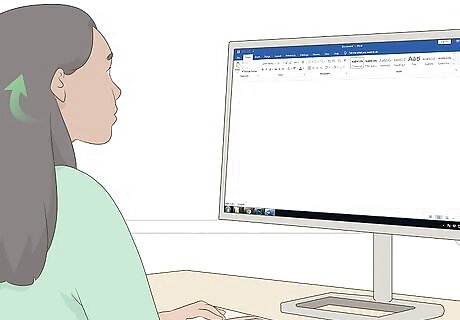
Lift your head up so you are able to look at the middle part of the screen. The middle part of the screen should be at eye level. Point your chin toward it to prevent yourself from slouching. You may feel tempted to look down, curl your head toward your chest, or tense up your shoulders. If you stay focused on what is ahead of you, you can do better on the test. Never look down at the keyboard if you can help it. Looking down greatly reduces your speed. Double-check your posture to ensure you feel comfortable before beginning to type. If your monitor is at the wrong height, adjust it or your chair.
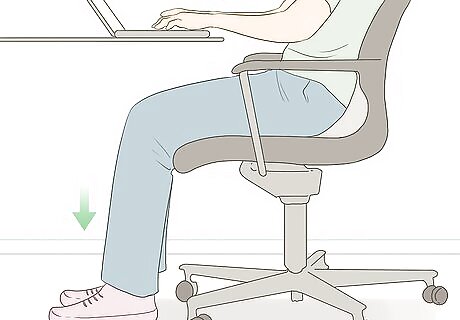
Plant your feet firmly on the floor for stability. Keep your knees bent at a 90-degree angle with your feet directly below them. Make sure the chair is at the right height so your feet aren’t dangling off the ground. Then, let your thighs rest against the seat cushion. Adjust your positioning as needed until you feel stable and sure that you have a full range of motion. When you take your typing test, remember to wear comfortable, stable shoes that allow you to keep your feet planted on the ground. Don’t pick anything that could throw off your posture.
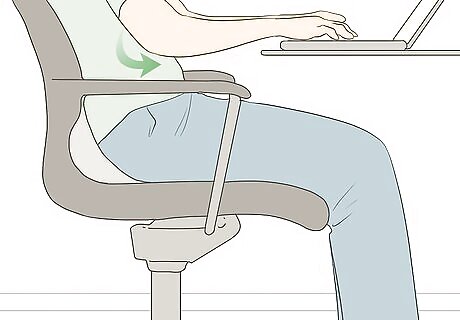
Hold your wrists level as you reach for the keyboard. Don’t rest your wrists against your desk or any cushions. This will actually affect the circulation to your hands, causing you to lose speed and range over time. Keep your wrists elevated with your fingers positioned over the keys. Wrist positioning makes a difference in your long-term health, not just during a typing test. When your wrists are bent, your muscles tire out much quicker. Poor circulation eventually leads to permanent injury. The only exception to using a wrist cushion is if your keyboard is way above your desk level. The elevation forces you to reach for the keys, so you aren’t pressing your wrists down against the cushion. If your keyboard has tabs on the back that makes it stand up, open them. Typing on a slanted keyboard is much easier and safer on your wrists than typing on a flat one. You could also try putting something underneath your keyboard to prop it up.
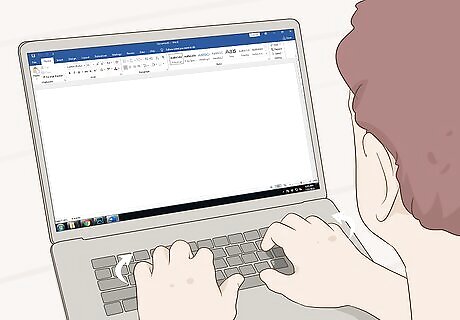
Curl your fingers so the tips touch the keys. Position your pinky, ring, middle, and index fingers over the middle part of your keyboard. Try reaching for different buttons on the keyboard to see if you can touch them without moving your wrist much. Curving your fingers is a way to keep your wrist straight and flat so your hands don’t tire out. Use the tips of your fingers to press down on the keys. Practice typing so you can maintain this position. It may feel a little awkward at first, but it leads to much greater speed and accuracy once you get used to it.
Finding Additional Practice
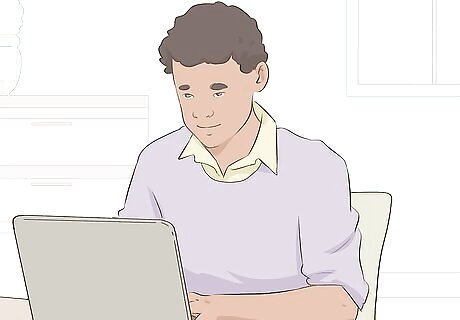
Practice your technique whenever you have access to a computer. Improving your skills is difficult if you never put them to the test. Set aside a little bit of time each day to type using the proper body posture and technique. There are many different materials you can use, but one of the easiest ways to practice is to just start typing. You could try typing whatever comes to mind or select a random piece of text to copy. For example, you could copy a page out of your favorite book, type up a magazine article, or write a diary entry. The important part is to keep your fingers moving so you get a little quicker each day. When practicing, focus on speed and accuracy. Part of it is keeping your fingers in the correct position so you don’t have to look down at the keys while you type. Choose new practice material as often as possible. You won’t know what to expect during a test, so prepare yourself to type up something you have never seen before.
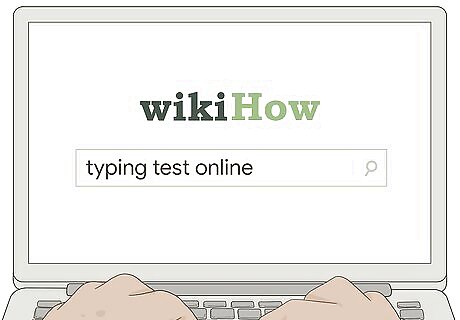
Take practice tests online to improve your speed. Do a basic search for typing tests or typing training. There are all sorts of free test websites out there. Most of them keep track of the number of words per minute you type. You can keep track of your words per minute rating to get an idea of how fast you type and how much you improve through practice. Remember that not all online tests will be like official tests you plan on taking, but they are still a simple and inexpensive way to gain experience. The average words per minute ratio is around 40. Professional typists can often type 65 to 70 words per minute. Unless you’re applying for a job that requires speed, you won’t need to type as fast as a professional.
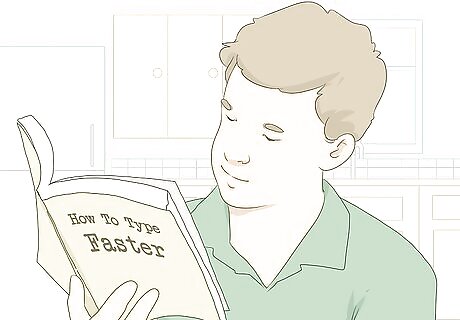
Purchase typing books that contain practice exercises. If you’re looking for more variety, head to your local bookstore or library. Pick out instructional books that contain a variety of challenging exercises. Then, set the books up near your monitor to practice typing what you read. Since you have to look back and forth from the screen to the page, it’s more difficult than typing from an online prompt. You could also shop online to find suitable books. Another option is to print out exercises you like and set them up near your computer. Reading the text on the page takes a little extra time, so don’t worry if you’re not as fast as you normally are at first. Make sure you have adequate lighting and positioning, then keep practicing to get faster.
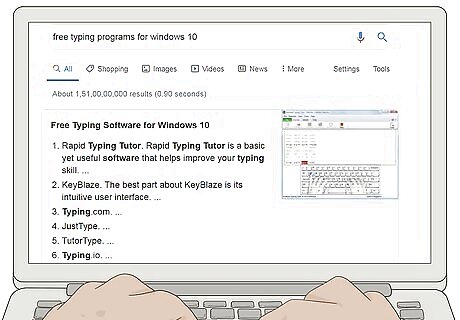
Download a computer program that teaches typing skills. There are quite a few free typing programs available for download. Search for typing software online, download a program you like, then use it for practice. Quality typing programs are a great way to learn more about proper typing technique, but they are also useful for increasing your speed and accuracy. For example, a typing program may teach you where to position your hands and which finger to use to hit a certain key. They also come with plenty of practice exercises, so you don’t need to search for new ones on your own. If you’re looking for something more professional, you could also pay for a typing tutor program. Good programs aren’t very expensive, usually costing $30 or less. They often have more features than free programs.

Take a typing class if you prefer to work with a tutor in person. A typing class can be a good idea if you’re completely new to speedy typing. Expect to work on posture, hand positioning, and other issues that affect your skill. The best part of taking a class is that you will have a teacher there to correct your mistakes and show you how to improve. Expect plenty of practice exercises designed to help you succeed. Classes are often the most expensive option, but they can also be the most useful if you’re having a hard time figuring out what to do on your own.


















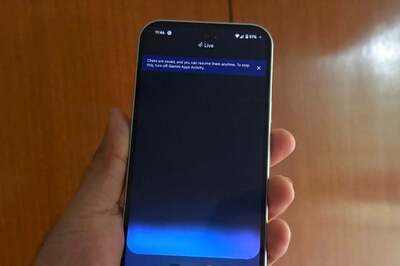
Comments
0 comment